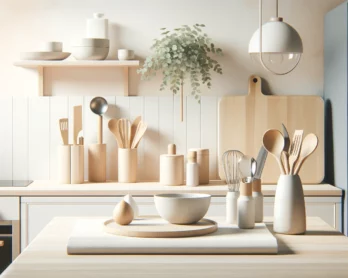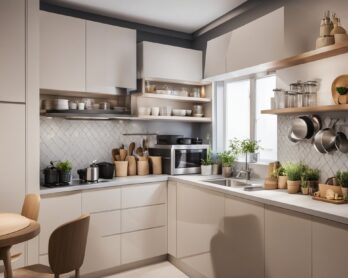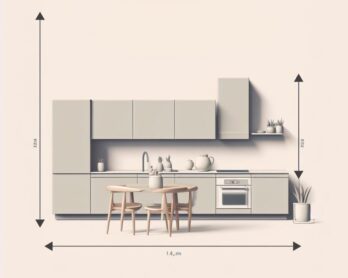Overview
Today’s commercial kitchens are large spaces to encompass cooking stations with the necessary equipment to function. This provides the chef(s) and cooks a convenient work area to prepare, cook, and bake. Storage space is available in a commercial kitchen on a larger scale than a home kitchen for the tools necessary for the trade such as professional cutlery, storage containers, and cookware. The head chef generally establishes the kitchen layout and quantity of workstations in his or her commercial kitchen. This means that the commercial Kitchen Equipment, appliances, and devices have ample space for functionality. Commercial kitchens are identified by the equipment, and are designed for preparing large-scale amounts of food and varieties. Home-use equipment cannot handle the production routine or the frequent replacement of commercial equipment.
Work Stations
The style of cooking and the manner of food prep traditions are involved in workstation decisions to provide an excellent cuisine. The sample stations are comprised of catering, grilling, sautéing, and baking for accommodating those functions. For preparing what is on the menu, each station needs the space, tableware, and essential equipment to do this task. The resources of food ingredients from fresh vegetables and fruits to plating the finished product are essentials for the chef.
Kitchen Design
When considering a commercial kitchen layout, it is important to know your state and county building codes, particularly electrical and plumbing as well as codes for protecting your kitchen staff to prevent injury in spaces with heated surfaces, and patterns of movement for allowing free traffic flow. Your plan must consider the additional natural gas pipe and electrical outlets at each station; water supplies, floor drains close to sinks, multiple sinks for food prep, pots/skillets and utensil cleaning, and handwashing.
Choosing Commercial Kitchen Equipment
Selecting such equipments can be an overwhelming experience just thinking about it. You may want the best and most efficient for all equipment. The decisions can be a bit thought provoking for the most important equipment considerations for your budget.
The first question to ask yourself is about space:
Do you want and have space for a walk-in cooler or stand-alone refrigerating units
How much of valuable area do you have
What will each area contain
Do you want equipment above or below something
Time usage for appliances
Can appliances fit through doors and do they need wheels
The next thought is energy efficiency for your budgetary considerations:
Energy Star appliances will be a cost savings for new commercial kitchen appliances
The rating is authentic for having a lower electric bill
Be sure to check shipping charges that can save huge costs
Check for warranties for parts and labor—sometimes labor for a repair or parts installation is not covered
You will want to think about the durability of your commercial Kitchen Equipment to give you years of service without breaking down:
Superior quality stainless steel is easy to clean having sanitary properties
To be sure you’re getting authentic stainless steel, put a magnet on it—magnets will not adhere to genuine stainless steel
A convenient digital display tells you at a glance your temperature and settings saving time opening the door—be sure there is an off/on control for infrequent fridge/freezer use
Compressors installed at the bottom of refrigerators eliminate the risk of ladders for routine maintenance removing dust, crumbs, and the like
Safety Musts
Restaurants with commercial Kitchen Equipment must have safety features that are not usually on residential kitchen equipment. These comprise finger guards and safety shields.
Proprietors and employees must focus on safe work behavior in a commercial kitchen. Encourage all staff to use safe work procedures so as not to contribute to any accidents or injuries or any safety violation or deficiencies. All accidents and injuries must be reported and steps should be taken to prevent them in the future.
Exhaust fans may be required over all cook surfaces and sensor-controlled automatic fire suppression systems. Cushioned and protected non-slip materials can be used in areas of prolonged standing, damp zones, sinks, and ranges. Commercial kitchens use industrial fire extinguishers and/or fire retardant schemes dedicated in the building’s structure.
Health Codes
Health code regulations and requirements vary from state to state. Health codes are strictly enforced by the county in which you operate your business for the safety of the public. The health department will look at all food preparation processes and food storage. Food prep and hand washing are not allowed at the same sink. Commercial kitchen dishwashers may be required to heat to a specified temperature to avoid food-borne illness and disease.
Health inspectors use specialized equipment and accurate thermometers to ensure your commercial kitchen establishment meets county codes. Health inspectors are supposed to check restaurants two times each year. With walk-ins, there is a high potential for food safety violations when not cleaned or properly maintained. Fines can total thousands of dollars and restaurants can be faced with temporary closure. If a restaurant is closed, an inspector will most often be back within 24 hours to reappraise the findings. The visits will continue until all violations are remediated before reopening. This results in lost revenue by being closed also hurts your reputation. Requirements also include the proper method for handling trash and disposing of it in commercial kitchens.
Be sure your commercial Kitchen Equipment walk-in cooler has no water dripping from the ceiling. A proliferation of ice buildup on the condenser will be noted on the citation of violations including any extra ice store in a garbage can. Shelves in the walk-ins must not have rust that can fall off in flecks into the food products underneath. The condensation line for the cooler must be connected and not dripping into a pan at the bottom of the component.
A Final Word
Such equipments may only be required where there is a need to serve a large number of people at the same time. Hence, you may want to ensure that the equipments you’re getting are durable enough as well, as they tend to have to go through a lot of beating and are used continuously for long periods of time.









